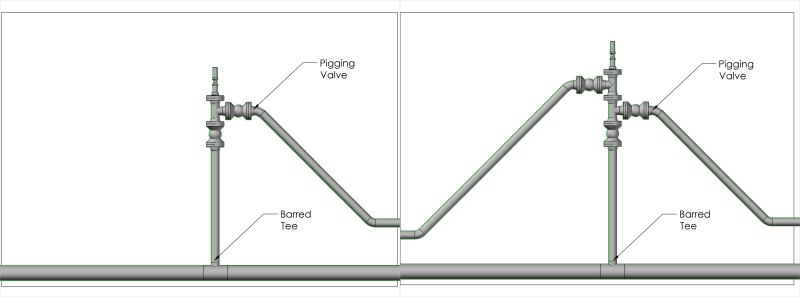DekDee,
WOW, a bit sensitive are we? You perfectly illustrated my point in your post of 30 Sep. The "cold water" needs to come in the form of "what is the source of that position?" kinds of questions. I ask those kinds of questions of everyone from lease operators to senior management, and most especially of engineers. When welding inspectors start making crap up (or more often morphing something partially recalled into something else) then they need to be asked to cite references, just like you said above.
A flange is a fitting. A blind flange is a bolt-on adjunct to a fitting. In the drawing above, we put the blowdown for the line(s) on the top flange of a tee. To add another well to the system, you shut the vertical block valve, shut the pigging valve(s) from the well(s) already connected, blow the tiny section down through the 2-inch valve on the blind, unbolt the blind, bolt in a new tee (with its own isolation pigging valve), and bolt the pierced blind back on the top. My client that has a stack of 8 tie-ins at one point, took nearly a year to develop the 8 wells and never had to blow the trunk down to tie them in. Instead of a blind, this could be a weld-cap, thread-o-let and a RFWN flange. Same outcome for a bit more money.
I hope it is clear why just a weld cap, thread-o-let, and ball valve welded to the tee outlet would be less effective in this case. Same with an 8X4 reducer welded to a 4X2 reducer with a transition to a threaded ball valve (there are hundreds of thousands of doglegs like that in gas fields around the world), they just don't lend themselves to system expansions.
[bold]David Simpson, PE[/bold]
MuleShoe Engineering
In questions of science, the authority of a thousand is not worth the humble reasoning of a single individual. Galileo Galilei, Italian Physicist
